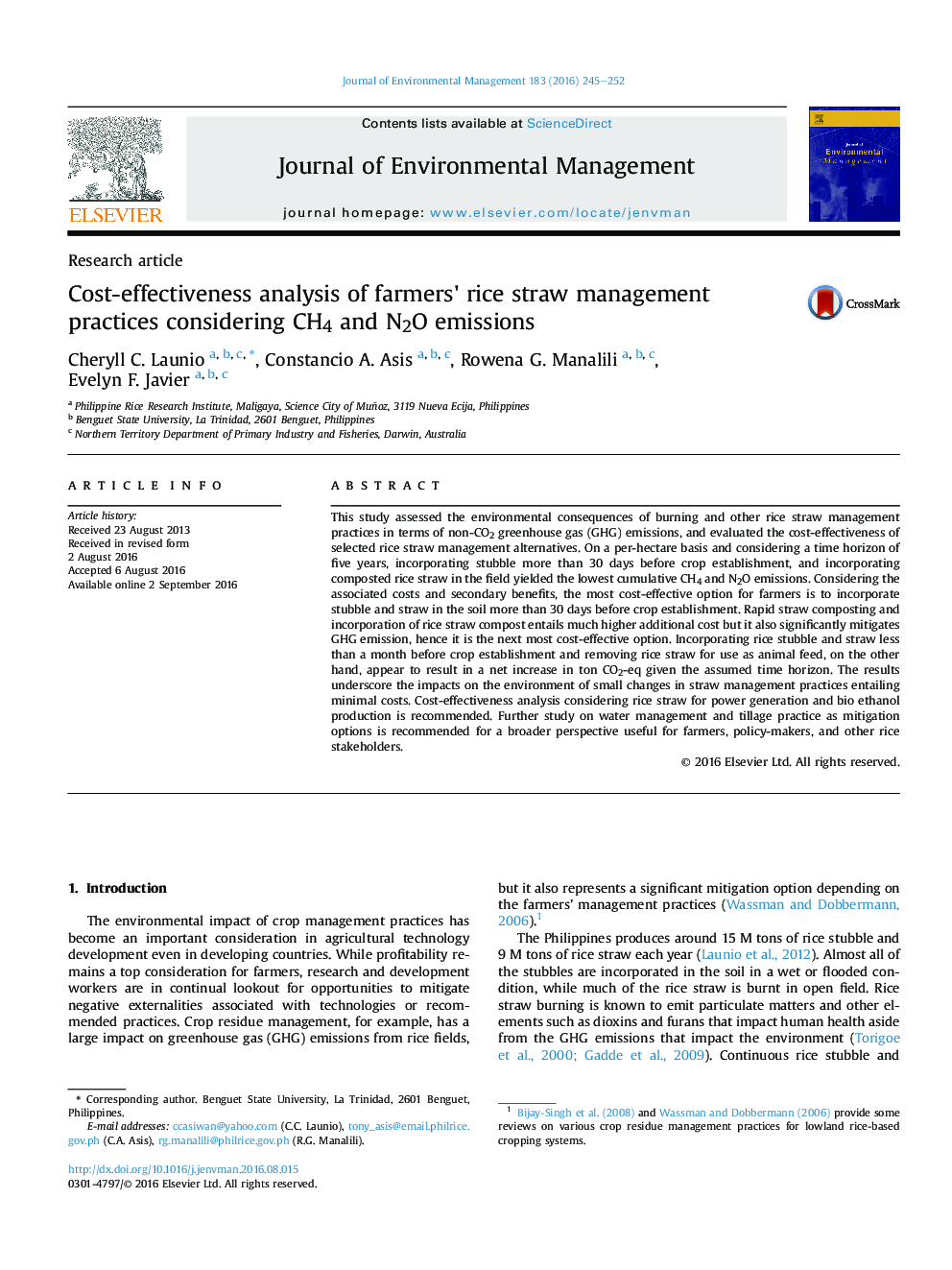| کد مقاله | کد نشریه | سال انتشار | مقاله انگلیسی | نسخه تمام متن |
|---|---|---|---|---|
| 5117309 | 1378121 | 2016 | 8 صفحه PDF | دانلود رایگان |

- CH4 and N2O emissions due to rice straw management practices were assessed.
- Costs and cost effectiveness of rice straw management alternatives evaluated.
- The most cost-effective option is early incorporation of stubble and straw in the soil.
- Small changes in farmers' straw management practices would impact GHG emissions.
This study assessed the environmental consequences of burning and other rice straw management practices in terms of non-CO2 greenhouse gas (GHG) emissions, and evaluated the cost-effectiveness of selected rice straw management alternatives. On a per-hectare basis and considering a time horizon of five years, incorporating stubble more than 30 days before crop establishment, and incorporating composted rice straw in the field yielded the lowest cumulative CH4 and N2O emissions. Considering the associated costs and secondary benefits, the most cost-effective option for farmers is to incorporate stubble and straw in the soil more than 30 days before crop establishment. Rapid straw composting and incorporation of rice straw compost entails much higher additional cost but it also significantly mitigates GHG emission, hence it is the next most cost-effective option. Incorporating rice stubble and straw less than a month before crop establishment and removing rice straw for use as animal feed, on the other hand, appear to result in a net increase in ton CO2-eq given the assumed time horizon. The results underscore the impacts on the environment of small changes in straw management practices entailing minimal costs. Cost-effectiveness analysis considering rice straw for power generation and bio ethanol production is recommended. Further study on water management and tillage practice as mitigation options is recommended for a broader perspective useful for farmers, policy-makers, and other rice stakeholders.
Journal: Journal of Environmental Management - Volume 183, Part 1, 1 December 2016, Pages 245-252